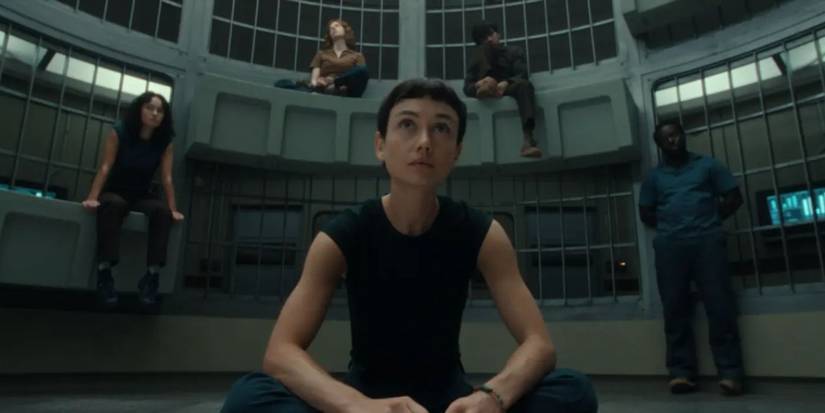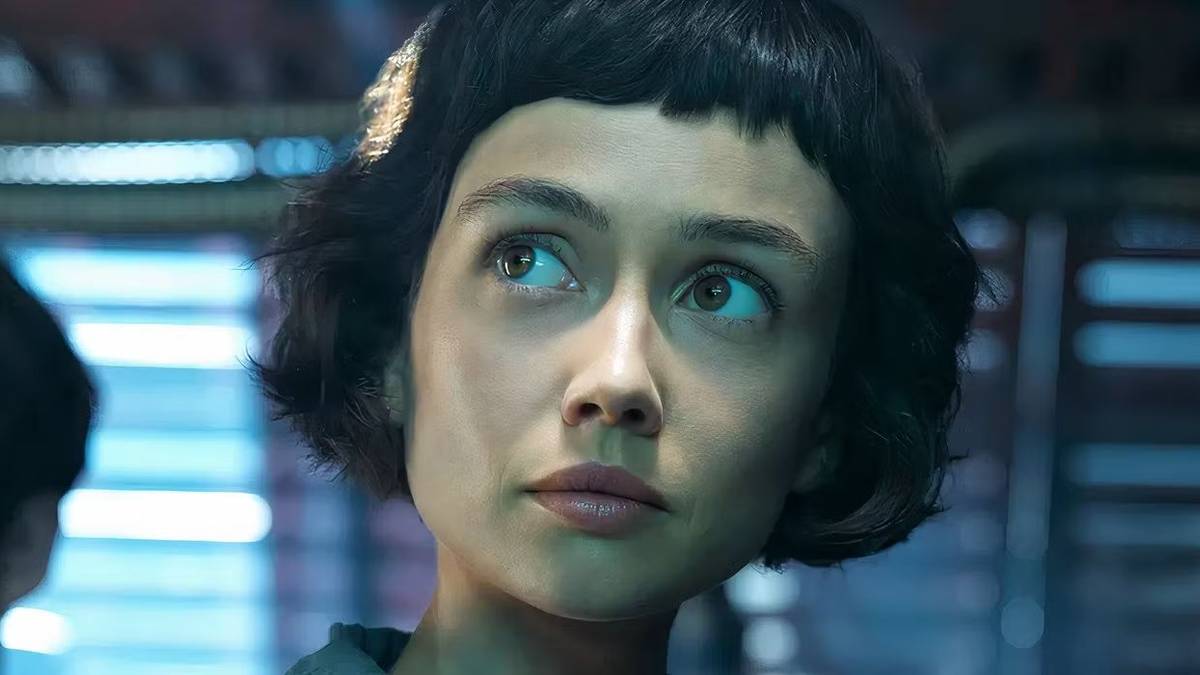Editor’s note: The below contains spoilers for the Alien: Earth finale.
The Alien: Earth season finale completely upends the order of things. Now, Wendy (Sydney Chandler) and the Lost Boys are free and hellbent on “ruling” Prodigy’s Neverland research island, and, to help them achieve such ends, they also have not just one, but two xenomorphs by their side. Meanwhile, Yutani (Sandra Yi Sencindiver) is sending her own forces in, poised to take over what remains of Boy Kavalier’s (Samuel Blenkin) megacorporation. A big part of what she wants, however, is to retrieve the alien species first acquired by Weyland-Yutani’s USCSS Maginot, which includes the xenomorphs now obedient to Wendy.
The status quo at the end of the season leaves us with more questions than answers, including how the FX series ties into the original Alien film. This question is directly connected to the fact that Weyland-Yutani had xenomorphs, but lost them to Wendy. Right now, as a second season is yet to be announced, a new theory claims that these events might have sealed the fate of the USCSS Nostromo, the ship in the original movie where Ellen Ripley (Sigourney Weaver) makes her stand against a xenomorph that kills all her colleagues. If that’s really the case, then Alien: Earth could lead directly into the events of Alien.
‘Alien’s Fateful Nostromo Mission Might Have Been Part of a Bigger Scheme

Wendy, Curly, Nibs, Slightly, and Smee trapped in a cage in ‘Alien: Earth’ Episode 8.Image via FX on Hulu
In Ridley Scott‘s original Alien film, the Nostromo is rerouted from its Earth-bound trajectory to investigate an emergency signal on the planet LV-426. After everything goes south and the xenomorph has taken over the ship, Ash (Ian Holm) reveals that he is an android (or synthetic) and that he rerouted the ship on purpose under orders from Weyland-Yutani. The company wanted the crew to collect the alien specimens found there and bring them to Earth from the start, as if it knew what would be found. From then on, even the crew itself becomes expendable, and getting the xenomorph to Earth is the top priority.
Although Ash explains the whole conspiracy before he dies on the Nostromo, Alien: Earth now gives all that another layer. There are two years between the events of the original film and the new series, but the Nostromo is launched from Earth in 2120, the same year in which the film takes place. The time gap between those two events is still unknown, but it couldn’t be more than a few months, and Yutani is about to find out that she no longer owns any xenomorphs or other alien specimens. In Episode 6, “The Fly,” she offers Boy Kavalier billions of dollars to have them back, but is ultimately frustrated by Kavalier’s childish shenanigans. Wendy taking over Neverland is Yutani’s second frustration, and, now, the best way for her to have her aliens is to send another crew to acquire more of them.
The official in-universe explanation for everything that happens to the Nostromo in Alien is that Weyland-Yutani caught the signal from LV-426, processed it, and relayed the new directives to Ash aboard the ship. However, given the proximity between all these events, it now seems like the company wanted the Nostromo to be right where it is by the beginning of the movie, and the whole story about “catching the signal” might have been nothing more than a ploy to make the disaster look like just that instead of being part of a larger corporate conspiracy to acquire alien specimens.
‘Alien: Earth’ Proves Weyland-Yutani Already Knew Where To Find Xenomorphs
To be fair, the theory that Weyland-Yutani lied about the Nostromo’s true purpose isn’t new. Everything falls into place too neatly in the movie for it to be a coincidence. The crew doesn’t even know that Ash is a synthetic, for example, and only learns it when he openly takes the company’s side against the others. It’s almost as if the company had known about LV-426 all along and intentionally sent the Nostromo there to fetch more xenomorphs, lying to the crew about the true nature of their mission. As the film explains, the Nostromo is officially a towing vehicle hauling mineral ore back to Earth, essentially a space truck, which, for a corporation as wealthy as Weyland-Yutani, is truly inexpensive.
What Alien: Earth proves regarding this theory is how Weyland-Yutani knew about LV-426 and the xenomorphs from the start. Episode 5, “In Space No One…” is essentially a miniature Alien film showing why the Maginot failed. They were a research vessel on a 65-year mission to collect alien specimens, xenomorphs included. The Maginot crew might have been clumsy, but that’s also part of it — the company intended to get what it wanted by spending the least amount of money possible, therefore hiring people who were probably not really suited for the job. Ultimately, though, the mission failed because it was sabotaged by Boy Kavalier, who wanted the ship to crash in Prodigy territory so he could acquire the aliens for himself.
The thing is, to get xenomorph eggs, the Maginot must surely have been to LV-426. According to series creator Noah Hawley, Alien: Earth only recognizes the original Alien and the sequel Aliens in its story, so there are no Engineers and other planets to be considered. As far as we know, LV-426 is the only place where xenomorph eggs are found, so the Maginot could only have acquired its eggs there. What a potential Season 2 could explain is how the company learned about the exoplanet, whether it was indeed by simply catching the emergency signal or something else. This, combined with the timeline of events, points to the Nostromo’s ultimate purpose being about Yutani getting her hands on xenomorphs rather than hauling ore to Earth.
‘Alien: Earth’ Might Lead Directly Into the Original ‘Alien’ Movie
Hawley has previously said that, to him, the Alien franchise is really about class and how corporations rule over people’s lives, and that’s proven by how, in the original film, the lives of the crew are all expendable. So the crew of the Nostromo might have been hired on a whim shortly after the events of Alien: Earth, only to have someone manning the ship as it fulfilled its true purpose: to get Yutani her xenomorphs. In fact, had the Maginot not been sabotaged, there might have been no need for the Nostromo’s mission at all. It’s a sad notion, but in a world where corporations rule as deities and ordinary people have to take what they can get, it’s not that much of a stretch.
As for the corporate conspiracy of it all, we know it doesn’t end after the original Alien, because, thanks to Ripley, Yutani’s mission fails. To remedy that, by the time Aliens takes place, 57 years after the events of the original film, the company’s strategy has shifted to establishing a colony on LV-426 and discrediting any claim Ripley might have about the planet or Weyland-Yutani itself. Ripley herself learns that Carter Burke’s (Paul Reiser) intention was to profit from the xenomorphs, as a Weyland-Yutani representative.
The issue that remains is just how long there is between the events of Alien: Earth and the Nostromo’s ill-fated departure from Earth. Both take place in 2120, with the events of the original Alien film set in 2122, with the Nostromo crew having been asleep for 11 months since leaving the planet Thedus with their mineral ore haul. Depending on when exactly the Nostromo launches, it’s perfectly reasonable to wonder whether Alien: Earth’s endgame could lead directly into the events of Alien, the same way Andor leads into Rogue One: A Star Wars Story and Star Wars: Episode IV — A New Hope.
